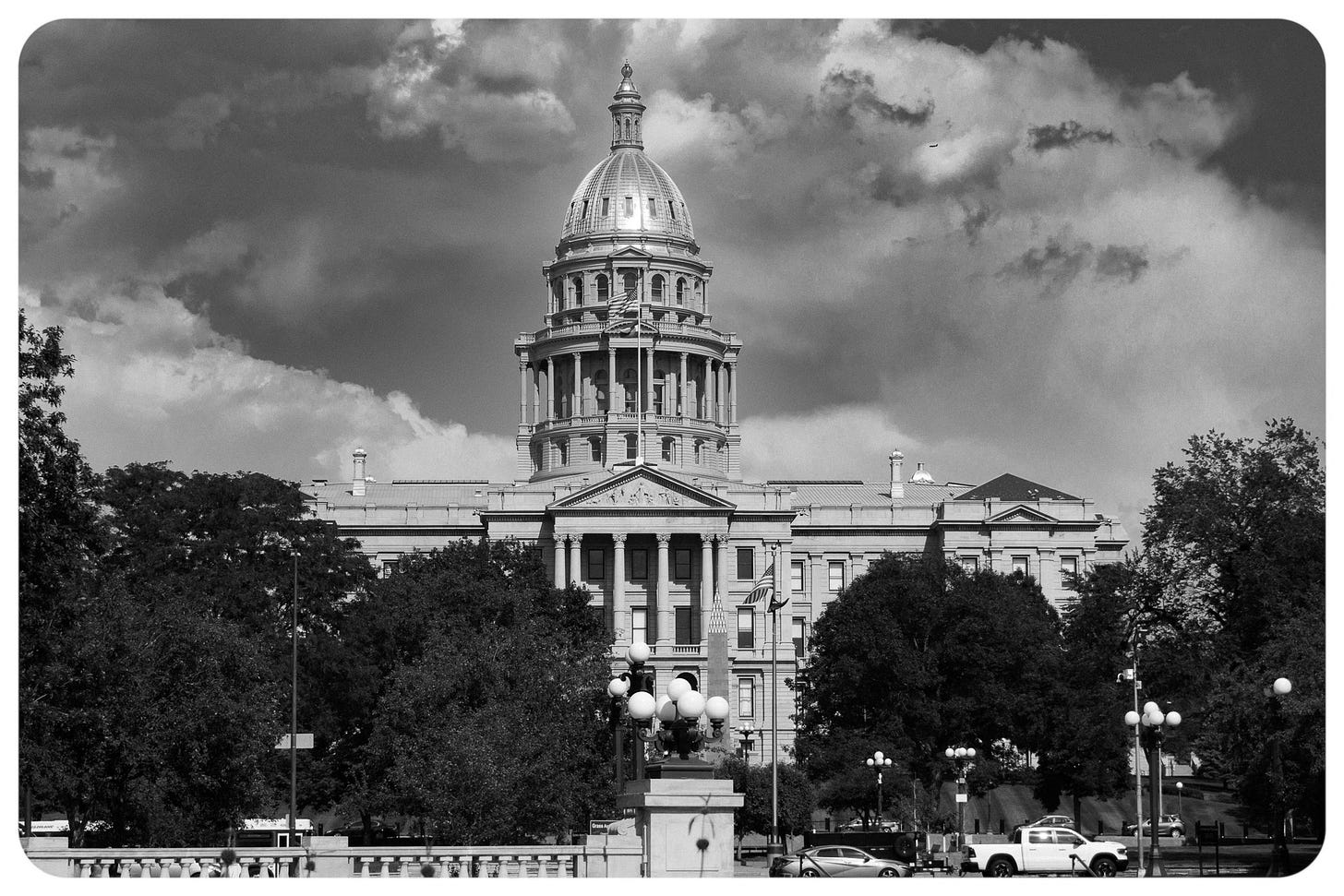Happy Sunday, friends. We’ve made it through another week yet again. This image is from last summer when I made a short day trip up to Denver to mess around with some travel zoom lenses. I chose it for today as state capitals have been in the news a lot recently. But I also wanted to experiment with monochrome.
There’s a simplicity to monochrome that I believe adds impact to certain styles of photography, especially with urban/street subjects and portraiture. A lot of people have been returning to film for this very reason, but not me.
Despite the recent popular trends towards shooting film, I choose not to. While I enjoy the nostalgia of film and the simplicity and craftsmanship of film cameras, it’s not really my thing on many levels. On the positive side, film shooting makes you slow down. That’s a good thing, and it’s something that gets easily lost in today’s digital world. Moreover, if shooting film makes you happy, go for it! That’s the whole point of photography for enthusiasts and hobbyists, in my opinion (besides producing interesting images).
The Case for Digital
Unless you’re shooting sheet film and doing your own developing and darkroom work, traditional roll film puts you at a distinct creative disadvantage.
I’m reminded of a famous quote from Frank Sinatra:
“I feel sorry for sober people. When they wake up in the morning, that’s as good as they’re going to feel all day.”
That’s exactly what you get shooting roll film and getting it developed by an outside lab. What comes out of the developed film is pretty much the best you’re going to get; scanning and adjusting can only offer minor improvements.
Consider Ansel Adam’s master trilogy of books, published in 1980:
Keep reading with a 7-day free trial
Subscribe to The Photographer's Perspective to keep reading this post and get 7 days of free access to the full post archives.





